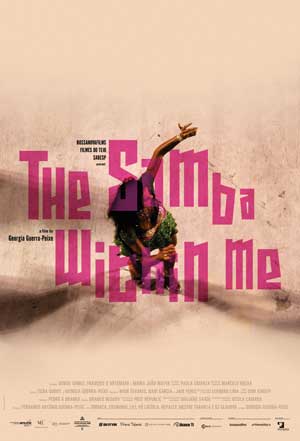
New Documentary ‘The Samba Within Me’ takes focus on Rio’s Mangueira neighbourhood
27 January, 2011The Samba Within Me (O Samba Que Mora Em Mim) will premiere in Brazil on February 11th. This documentary focuses, not directly on the samba that it’s name suggests, but on the Mangueira Samba School of Rio de Janeiro. Directed by Georgia Guerra-Peixe and produced by Bossa Nova Filmes the documentary has alread received many plaudits during it’s showing as part of the Sao Paulo Film Festival. Personally, we can’t wait to see it, especially if it’s as beautiful as the trailer suggests:
http://www.youtube.com/watch?v=ZPBYy2iTT6w
Here’s the full synopsis for the film:
The Samba Within Me is a documentary set in the Mangueira Hill (Morro da Mangueira), in Rio de Janeiro, during the pre-carnival period. The starting point is the Estação Primeira de Mangueira’ samba court, the place where the director Georgia Guerra-Peixe reencounters her own history. In the beginning of the documentary, the director tells us what carnival has always meant to her and to her family. From the court, she starts her way up to the Mangueira’s Hill for the first time, driven by her desire to go beyond the samba “If I could silence a Samba school…”. Her particular look leads to this “let yourself” go over the hill; a natural walk that acquires melancholic variations and different rhythmic cadences, resulting in a composition that could be called the samba of a glance. Beyond the court lies the samba of Georgia Guerra-Peixe, a samba that is a way of being, of living and also, a way of singing and dancing.
 Flavia Guerra interviewed director director Georgia Guerra – Peixe regarding the film for O Estado de Sao Paulo. Here’s that interview:
Flavia Guerra interviewed director director Georgia Guerra – Peixe regarding the film for O Estado de Sao Paulo. Here’s that interview:
Despite the name, The Samba That Lives Whithin Me is not a film about samba, but the people who live in Mangueira. How did you came to that idea?
It came from my childhood memories. My father doesn’t dance or play the samba, but he was the cultural director of the Mangueira Samba School for 21 years. It’s his passion. I always followed him. My childhood memories are always linked to the time when I used to go with him to Mangueira. The time came when I needed to look back to find my time, my memories.
Was this personal quest relevant when you decided to start the film in first person?
It was. The film wasn’t starting well. I was almost done when the writer Ticha Godoy told me that something was missing that would tell the viewer why I made this movie. And I sent her texts I had written early in the project. A few days later she called me saying: “I found what I was looking for. You have to narrate this text at the beginning. You have to put yourself in the film. “
And you liked her idea?
A first I froze in fear. It was days before I could talk to Ticha. She called me and I didn’t answer. It is not easy to explain. Although the film has a personal tone, after all it is a ride by my Morro da Mangueira that goes beyond the Samba School, I hesitated to put me in focus. But she was right. I’m not on the scene, but my presence, although mild, is what gives the tone of the film.
Watching your film is like walking through the Magueira slum.
Exactly! It was always my intention. I wanted to pass by people, talk to them, listen, go beyond the conventional. I did not want to talk about crime and violence. There is no scene about that. Neither did I want to film the same carnaval as always. What I wanted was to climb the hill, which my father never did, and discover the samba that lives within me and in the very special people from that specific place. The main character is the Mangueira Slum.
Being a woman director helps to achieve the subtlety that the camera has while it moves around this slum?
Yes, in order to obtain a very calm camera and not disturb the daily life of the community, everything was very discreet. I opted for a soft illumination, for a steadycam for a motion as smooth as possible. Upon my feminine look, and the camera, everything goes naturally. This is a documentary-poem. So everything is in this tone of affection.
Link in portuguese: http://www.estadao.com.br/estadaodehoje/20101031/not_imp632346,0.php
More info:
The film’s website
Follow Sounds and Colours: Facebook / Twitter / Instagram / Mixcloud / Soundcloud / Bandcamp
Subscribe to the Sounds and Colours Newsletter for regular updates, news and competitions bringing the best of Latin American culture direct to your Inbox.

